Review: 2011 Kia Sportage SX
Though Hyundai owns a controlling stake in and shares platforms with Kia, the two Korean car companies continue to operate more independently than GM’s divisions did back in their heydays. So the decision between related products often comes down to something beyond price. Take, for example, the Kia Sportage. Why buy it instead of the related Hyundai Tucson?
Sure, styling is subjective, but some designs are clearly worse than others owing to unbalanced proportions or unresolved transitions. Not this time. The Sportage and Tucson share similar athletic proportions and neither exterior has an obvious flaw. The two design teams managed to craft shapes different from every competitor, and from each other. No exterior panels are shared, even the cutlines are different. With the Hyundai, there’s a complex combination of many angles. The Kia’s exterior is much cleaner, achieving a distinctive look through muscular forms that’s further enhanced by the SX’s 18-inch alloy wheels. The decision between them is highly subjective.
Inside, the Sportage’s design is again cleaner, to the point where it looks a bit cheap in the lower trim levels. Step up to the SX, though, and subtle detail changes together with perforated black leather seat surfaces make the interior seem more-or-less worthy of a price in the low 30s. The center stack controls are much easier to reach and to operate than those in the Tucson. One minor oddity: the temperature control for the driver’s seat, though it includes both heating and cooling rather than just heating, is half the size of the one for the passenger’s seat.
Forward visibility is decent in both SUVs, as it had better be since this is a key reason for the popularity of the segment. Still, the raked windshield forces a deep instrument panel and the A-pillars are on the thick side. Rearward visibility is fairly limited in the Tucson and even worse in the Sportage, thanks to unusually wide C-pillars. I wouldn’t be surprised if rearward visibility is the major reason people reject the Sportage after seriously considering it. The Sportage’s front seats don’t provide much lateral support, but are otherwise comfortable.
Given the Kia’s exterior dimensions, the rear seat is roomier and more comfortable than it has any right to be. Cargo space isn’t as generous, with 55 cubic feet compared to the 73 in a Toyota RAV4, and the front passenger seat doesn’t fold to further extend the load floor (it did with the previous-generation Sportage).
Then there’s the big difference compared to the Hyundai Tucson: Kia offers not only the corporate 176-horsepower 2.4-liter four, but also the direct-injected, turbocharged 2.0-liter first offered in the Hyundai Sonata Turbo, detuned a bit to peak at 260 horsepower (vs. 274). Standard in the Sportage SX, the boosted four feels strong, especially in the midrange, but sounds like nothing special and doesn’t stir the driver’s soul. The 269-horsepower V6 available since the 2006 model year in the Toyota RAV4 likely remains the segment’s performance champ. As in the Sonata, the turbo four seems tuned and tweaked to serve as a V6-substitute for mainstream buyers rather than for enthusiasts. One definite plus: unlike many turbos, it’s tuned to run on regular unleaded. Its big advantage over the 2.4 is the effortless, nearly lag-free acceleration with fewer revs in typical around-town driving. There’s only one transmission option in the SX: a homegrown manually-shiftable six-speed automatic. It doesn’t lug the 2.0T like it often does the 2.4, perhaps because the turbocharged engine produces far more torque at lower rpm (with a peak of 269 foot-pounds at 1,850). You can get the turbocharged engine with front-wheel-drive, but given this torque output all-wheel-drive is the better way to go.
Four-cylinder turbos are expected to increasingly replace V6s because they tend to be more fuel-efficient. In this case, the benefits are mixed. Based on the EPA ratings, the Kia 2.0T matches the 2.4 and outpoints the Toyota RAV4’s V6 in the city (21 vs. 19 miles-per-gallon), but doesn’t do quite as well on the highway (25 vs. 28 vs. 26). Proving that a four-cylinder turbo can actually get much worse fuel economy than a V6, Mazda’s CX-7 manages only 17 city and 21 highway while kicking out 16 fewer horsepower.
Even in SX trim, the Sportage’s suspension isn’t as taut as that in the Tucson, which was designed primarily for the European market. Still, the Sportage’s chassis feels solid and composed, with more steering feedback than you’ll get from the tragically numb system in the Tucson. The ride is generally smooth and quiet. There’s some jiggle over tar strips and the like, but this is typical of the segment.
Kia Sportage SX AWD pricing starts at $27,990, of which $2,500 goes for the turbocharged engine and a few additional minor features. A Premium Package (panoramic sunroof, keyless ignition, heated seats, rear obstacle detection, auto-dimming mirror with Homelink, cargo cover) adds $2,500. Leather with a cooled driver seat adds another $500, bringing the total for the tested vehicle to $30,990. And this is without the available $1,500 nav system. Yes, we have reached the point where a compact Korean SUV can cost over $30,000—they’re not just for cheapskates anymore. A similarly-equipped Toyota RAV4 Limited lists for only $449 more, a much smaller bump than in the past. Adjusting for feature differences using TrueDelta’s car price comparison tool adds about $1,000 to the Kia’s advantage. Not factored in: the Kia looks and feels like a more expensive vehicle than the Toyota.
The related Hyundai Tucson is better in some ways (handling, rearward visibility), but not so good in others (steering feel, ride quality, ergonomics). But the biggest difference is that, for undivulged reasons, Hyundai doesn’t offer the turbocharged engine in its compact SUV. So if you want 260 horsepower with a minimal fuel economy hit, your choice is obviously the Kia. There was a time when a turbocharged engine signified a driver’s car. Well, even with a torquey boosted four and a “sport suspension,” the Kia Sportage SX isn’t a poor man’s Audi Q5. What it is: a more stylish, better-finished, slightly more economical alternative to the Toyota RAV4 V6.
Summit Place Kia of Waterford, MI, provided the tested vehicle. They can be reached at (248) 682-6002.
Michael Karesh operates TrueDelta.com, an online provider of car reliability and price comparison information.
Michael Karesh lives in West Bloomfield, Michigan, with his wife and three children. In 2003 he received a Ph.D. from the University of Chicago. While in Chicago he worked at the National Opinion Research Center, a leader in the field of survey research. For his doctoral thesis, he spent a year-and-a-half inside an automaker studying how and how well it understood consumers when developing new products. While pursuing the degree he taught consumer behavior and product development at Oakland University. Since 1999, he has contributed auto reviews to Epinions, where he is currently one of two people in charge of the autos section. Since earning the degree he has continued to care for his children (school, gymnastics, tae-kwan-do...) and write reviews for Epinions and, more recently, The Truth About Cars while developing TrueDelta, a vehicle reliability and price comparison site.
More by Michael Karesh
Latest Car Reviews
Read moreLatest Product Reviews
Read moreRecent Comments
- Jeff Self driving cars are not ready for prime time.
- Lichtronamo Watch as the non-us based automakers shift more production to Mexico in the future.
- 28-Cars-Later " Electrek recently dug around in Tesla’s online parts catalog and found that the windshield costs a whopping $1,900 to replace.To be fair, that’s around what a Mercedes S-Class or Rivian windshield costs, but the Tesla’s glass is unique because of its shape. It’s also worth noting that most insurance plans have glass replacement options that can make the repair a low- or zero-cost issue. "Now I understand why my insurance is so high despite no claims for years and about 7,500 annual miles between three cars.
- AMcA My theory is that that when the Big 3 gave away the store to the UAW in the last contract, there was a side deal in which the UAW promised to go after the non-organized transplant plants. Even the UAW understands that if the wage differential gets too high it's gonna kill the golden goose.
- MKizzy Why else does range matter? Because in the EV advocate's dream scenario of a post-ICE future, the average multi-car household will find itself with more EVs in their garages and driveways than places to plug them in or the capacity to charge then all at once without significant electrical upgrades. Unless each vehicle has enough range to allow for multiple days without plugging in, fighting over charging access in multi-EV households will be right up there with finances for causes of domestic strife.



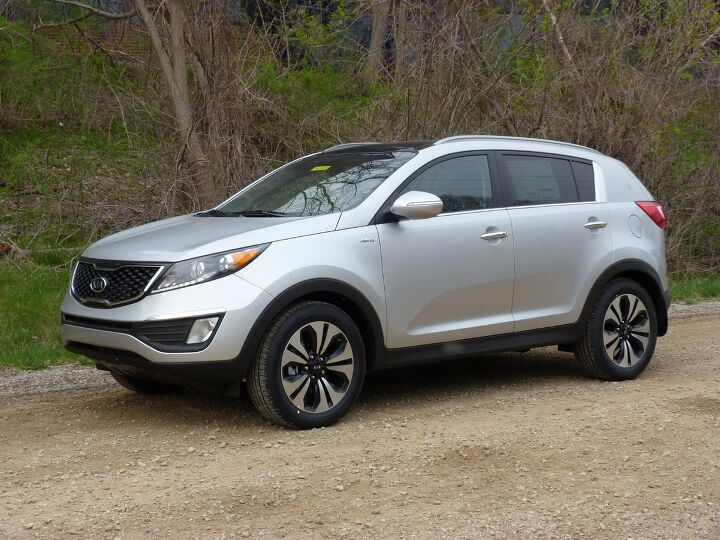























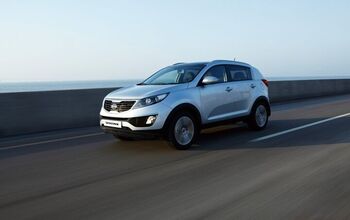
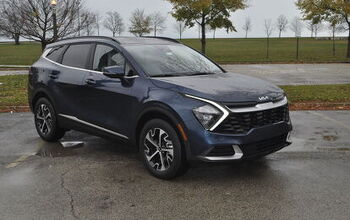
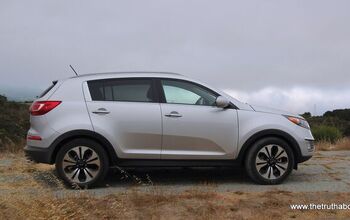

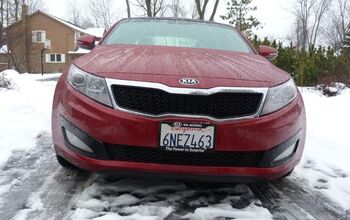










Comments
Join the conversation
I think I'd prefer the Equinox. More horsepower/torque, better cruising range (by over 100 miles), more rear seat leg room, longer wheelbase, etc, etc.
Dealer has no brochures for the 2012 Optima, the website for Kia has nothing at all for the 2012 model and refuses to allow a request for any brochure due to poor programming of the site. An attempt to contact Kia customer service via the website fails due to programming in the site. A call to Kia customer service results in a 10 minute wait to be answered and even they do not have a brochure. Nowhere can you find the official specs for the 2012 Kia. Some websites purport to have them, but they must be taken with a grain of kimchi. How can anyone have much faith in a company that fails so badly in communicating with the buying public? Do you really want to spend up to $30 large with a company that cannot manage a simple website? I have cash to buy the car, but no information. I am quickly losing faith that Kia is a car maker rather than just another throw-away appliance maker. Have others had this experience?